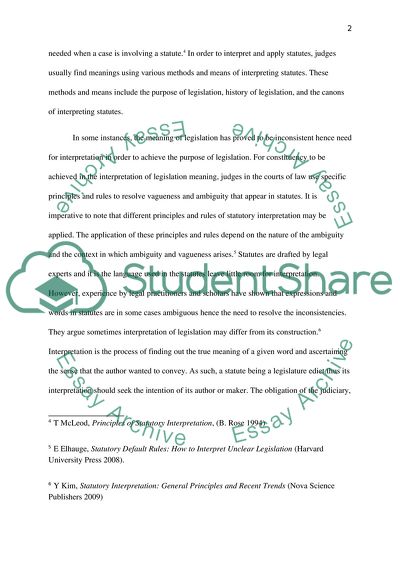Cite this document
(Statutory Interpretation Report Example | Topics and Well Written Essays - 2250 words, n.d.)
Statutory Interpretation Report Example | Topics and Well Written Essays - 2250 words. https://studentshare.org/law/1764418-using-your-knowledge-of-the-principles-and-rules-used-by-judges-to-interpret-statutes-comment-on-whether-derek-has-committed-an-offence-in-the-following-situation
Statutory Interpretation Report Example | Topics and Well Written Essays - 2250 words. https://studentshare.org/law/1764418-using-your-knowledge-of-the-principles-and-rules-used-by-judges-to-interpret-statutes-comment-on-whether-derek-has-committed-an-offence-in-the-following-situation
(Statutory Interpretation Report Example | Topics and Well Written Essays - 2250 Words)
Statutory Interpretation Report Example | Topics and Well Written Essays - 2250 Words. https://studentshare.org/law/1764418-using-your-knowledge-of-the-principles-and-rules-used-by-judges-to-interpret-statutes-comment-on-whether-derek-has-committed-an-offence-in-the-following-situation.
Statutory Interpretation Report Example | Topics and Well Written Essays - 2250 Words. https://studentshare.org/law/1764418-using-your-knowledge-of-the-principles-and-rules-used-by-judges-to-interpret-statutes-comment-on-whether-derek-has-committed-an-offence-in-the-following-situation.
“Statutory Interpretation Report Example | Topics and Well Written Essays - 2250 Words”. https://studentshare.org/law/1764418-using-your-knowledge-of-the-principles-and-rules-used-by-judges-to-interpret-statutes-comment-on-whether-derek-has-committed-an-offence-in-the-following-situation.


